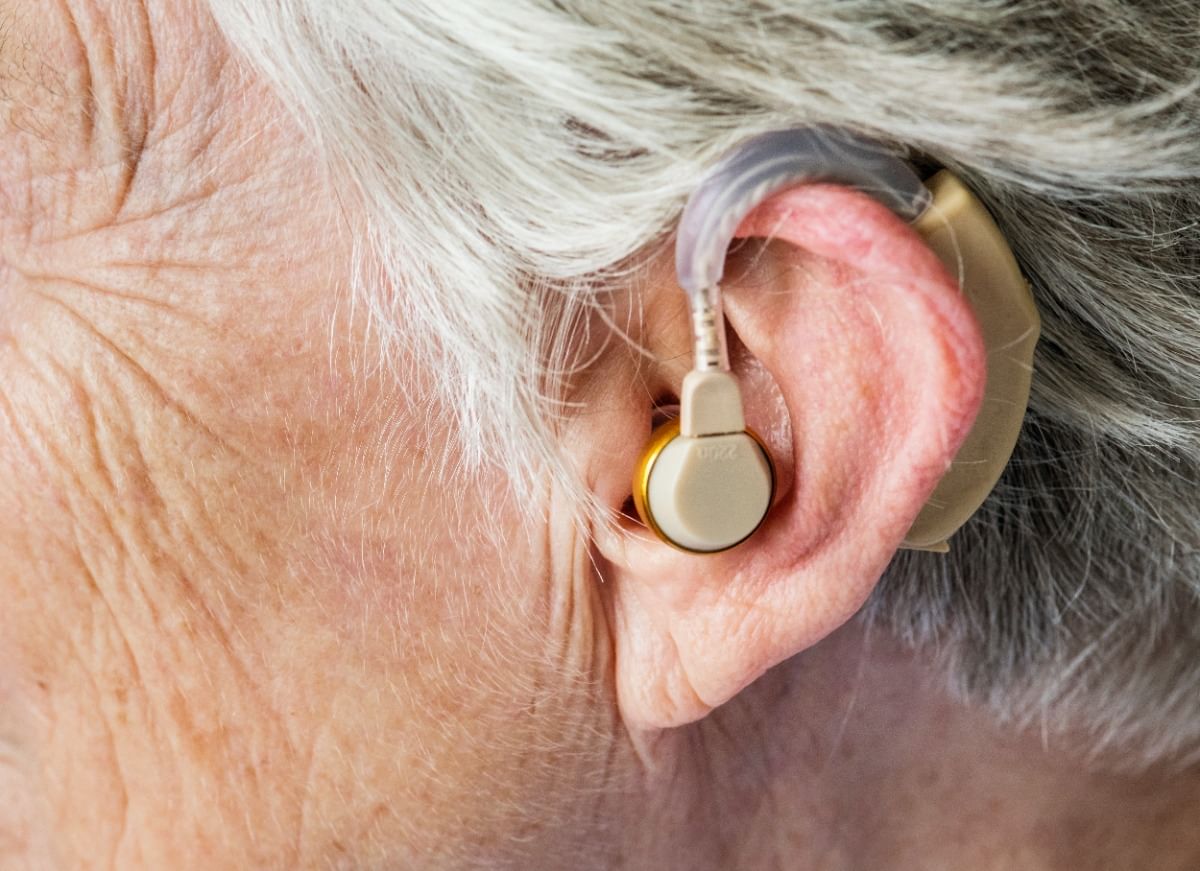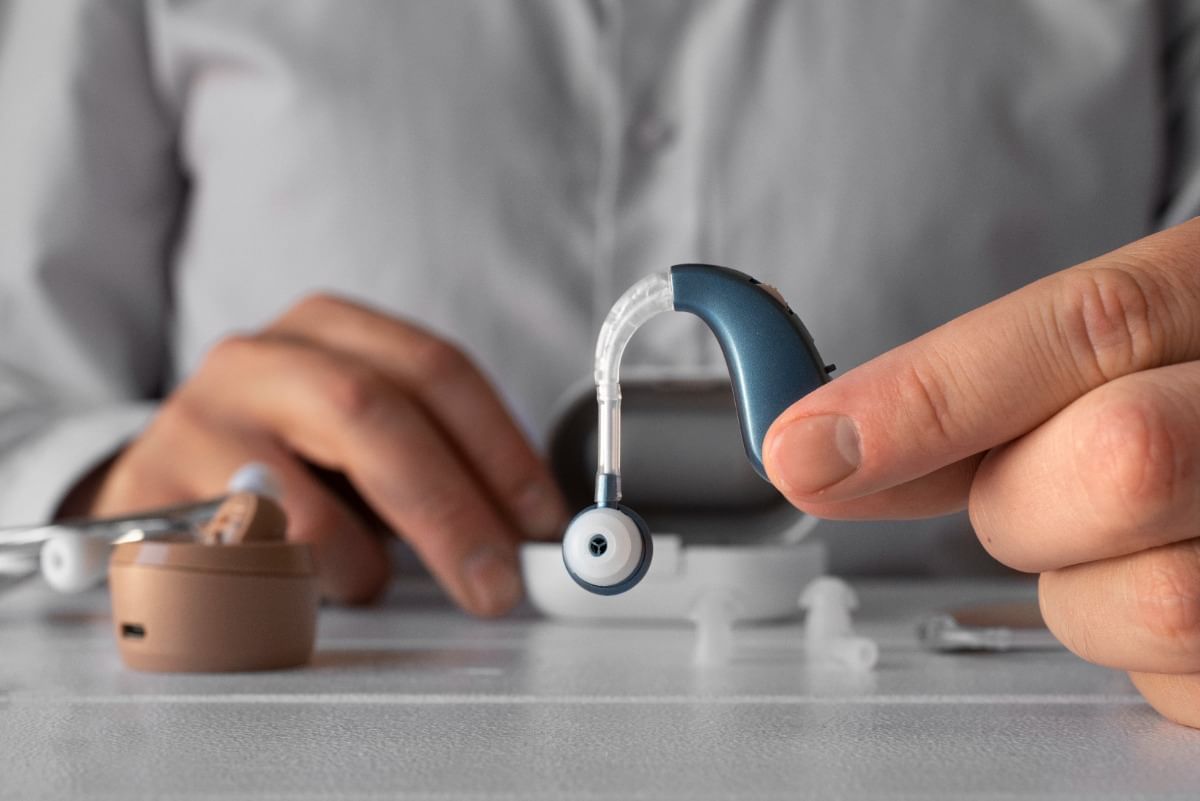Blog Post
New in Hearing Aids: Waterproof Technology
Dr. Scott Robertson looks at how waterproof hearing aids work, the most recent devices on the market, and practical tips for choosing and caring for them.

We are excited to announce that our new Stadium Trace Location in Hoover is NOW OPEN! Click here for more information.
Blog Post
Dr. Scott Robertson looks at how waterproof hearing aids work, the most recent devices on the market, and practical tips for choosing and caring for them.

Hearing aids have come a long way from bulky body-worn devices powered by zinc-air batteries. Today’s models are sleek, rechargeable, connect directly to smartphones, and hold their own in rain, sweat, and even a quick dip in the pool. Waterproof designs are the latest frontier, giving patients freedom to live, work out, and travel without constant fear of moisture damage. Our doctors at Alabama ENT & Allergy examine how waterproof hearing aids work, the latest devices on the market, and offer practical tips for choosing and caring for them.
Moisture is the number-one enemy of micro-electronics. Traditional hearing aids can short-circuit when exposed to sweat, coastal humidity, or an unexpected shower. Repairs are costly and downtime leaves users struggling to hear. Fully sealed devices with high ingress-protection (IP) ratings minimize these risks. The shift toward waterproof technology is especially valuable for:
Manufacturers measure durability with an IP code followed by two digits. The first digit rates dust protection; the second rates water protection. An IP68 device resists dust completely and survives immersion in one meter of water for thirty minutes. Anything lower than “8” is water-resistant, not fully waterproof. Even IP68 aids are not scuba gear, yet the rating is more than enough for sweat, rain, and accidental splashes.
Phonak Audeo Life: Phonak released the world’s first truly waterproof receiver-in-canal (RIC) hearing aid. Audeo Life can be submerged in up to 50 cm of fresh, salt, or pool water while still delivering the Paradise platform’s renowned sound quality.
Signia Silk Charge&Go IX: Silk Charge&Go IX is the first completely-in-canal (CIC) device to pair IP68 waterproofing with rechargeable convenience. The aid disappears inside the ear, offers 28-hour battery life, and charges wirelessly in a pocket-sized case.
ReSound Nexia: ReSound’s flagship for 2025 earned an IP68 rating and adds Bluetooth LE Audio with Auracast broadcasting. Users get robust water protection plus next-generation streaming for public venues and multi-room audio.
Starkey Genesis AI and Edge AI: Starkey redesigned its entire platform around ruggedness. Genesis AI and Edge AI models include eight protective barriers that let them handle sweat, rain, and dunking to one meter for 30 minutes.
Creating a waterproof aid is harder than sealing a smartphone. Hearing instruments need microphones and receivers that must remain acoustically open while blocking water. Manufacturers use:
1) Nano-coatings that repel liquid at the molecular level.
2) Rubber o-rings and gaskets around battery doors or USB-C charging ports.
3) Laser-welded shells with fewer seams than older snap-fit housings.
4) Membrane-covered microphones that let sound through but keep water out.
5) Inductive charging so no exposed metal contacts corrode.
Advances in materials science mean these seals stay flexible through thousands of heat-and-cool cycles, preventing micro-cracks that once plagued early “water-resistant” designs.

Water protection rarely shows up alone. This generation of aids stacks multiple improvements:
Longer-Lasting Lithium-Ion Batteries: Users get a full day of mixed streaming without carrying spare cells.
LE Audio and Auracast: The new Bluetooth standard reduces power draw and enables public broadcast audio in theaters, airports, and gyms.
Artificial-Intelligence Sound Processing: On-board neural networks analyze acoustic scenes and sharpen speech in real time.
Remote Programming: Secure tele-audiology sessions let Dr. Robertson fine-tune settings while patients stay home.
Integrated Health Sensors: Accelerometers track steps and detect falls, forwarding alerts through companion apps.
Your hearing aid journey begins with a personalized consultation. At Dr. Scott Robertson’s clinic, we take time to understand your specific needs, lifestyle, and preferences. Here’s what the process typically looks like:
The goal is not just to hear more but to hear better. Ongoing support is essential, and we remain available for adjustments, repairs, and continued care as needed.
Fewer Repairs: Waterproof sealing reduces corrosion, so devices spend more time on ears and less time in the mail.
Active Lifestyle Support: Patients swim at the beach, run charity races, or do yard work without swapping to “spare” aids.
Hygiene and Comfort: Sealed shells repel dust and skin oils, simplifying cleaning and lowering infection risk inside the ear canal.
Waterproof does not equal indestructible. Follow these best practices:
1) Rinse aids in fresh water after contact with pool chlorine or ocean salt, then pat dry.
2) Never press buttons while submerged; water pressure can force fluid past seals.
3) Dry aids overnight in a passive drying case if you sweat heavily during the day.
4) Avoid hot tubs and saunas; high heat degrades gaskets faster than water alone.
5) Remember that IP tests are done with new devices. Aging parts deserve periodic inspection at our clinic.
Questions to Ask Your Doctor:
Alabama ENT & Allergy tailors solutions based on diagnostic audiometry, real-ear measurements, and a lifestyle interview. Patients gain expert guidance on comparing advanced waterproof models and custom ear molds when extra retention or deeper seals are required. They also get app training for self-management of programs and volume.
Waterproof hearing aids remove one of the last obstacles to truly effortless hearing. If you want the freedom to enjoy Louisiana’s humid summers, hit the gym without worrying about sweat, or simply stop baby-sitting fragile electronics, schedule a consultation with Alabama ENT & Allergy today. Experience the latest technology in our demo room, then step outside and listen to life the way it should sound: clear, comfortable, and worry-free.

The first and foremost thing was—I went deaf. So, I was pretty panicked. I’ve always had breathing issues and sinus issues. I developed sleep apnea and didn’t even know I had it. Since then, I’ve been rebuilt from the chin up to my eyes—pretty much a complete overhaul.
READ MORE
I’ve always had a hard time breathing, and I just couldn’t take it anymore. I slept maybe four or five hours a night because I would wake up unable to breathe.
READ MORE
Before I came to see Dr. Robertson, I struggled with sinus issues year-round. I was miserable all the time and always had to make sure I carried tissues everywhere I went. I didn’t have a good quality of life.
READ MORE